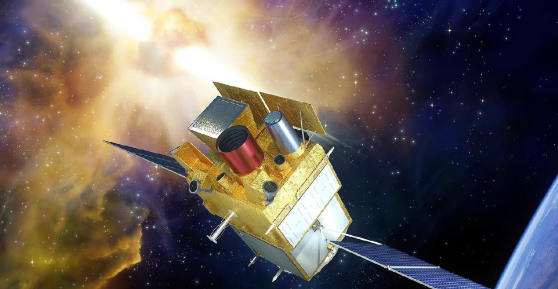China-France Satellite – Study Universe’s Explosive Events
China and France launched the Space Variable Objects Monitor (SVOM) from the Xichang Satellite Launch Center in Sichuan province on June 22. The launch went well. After working together on an oceanographic satellite in 2018, this is the first time that the two countries have worked together on astronomical study of this magnitude. Gamma-ray bursts (GRBs) are some of the most powerful and strange events in the universe. SVOM is meant to help us learn more about them.
What is Gamma-Ray Bursts (GRBs)?
Gamma ray bursts, or GRBs, are very strong gamma ray releases that can last anywhere from a few seconds to several minutes. They are seen in galaxies far away. They can be broken down into two groups:
- Short GRBs: These happen when two neutron stars or a neutron star and a black hole collide and last less than two seconds. Kilonovas are important for making heavy metals like gold and platinum, and short GRBs are sometimes linked to them.
- Long GRBs: These last longer than two seconds and are linked to the terrible deaths of very large stars. These bursts are very important for understanding how stars die and come back to life, how black holes form, and how neutron stars crash into each other.
The Mission of SVOM
SVOM’s primary mission is to find and study GRBs all over the universe so that we can learn more about how the universe began and how it has changed over time. Its job is to find GRB events and figure out what they are made of:
- Use these data to learn more about the structure of the universe and the events that cause GRBs.
- Work with ground-based telescopes around the world to get a lot of data after a GRB is found.
What are the Features of the SVOM Satellite?
The 930 kg SVOM satellite has several high-tech devices on board:
- ECLAIRs and MXT Telescopes:These were made in France and are very important for finding and recording GRBs.
- Gamma Ray Burst Monitor (GRB): This device, which was made in China, looks at the GRB spectrum.
- Visible Telescope (VT): This telescope, which was made in China, looks at the optical rays that come after a GRB event. By putting the satellite in a low Earth orbit 625 km above the Earth’s surface, SVOM takes advantage of a stable environment and a fast orbital period of 96 minutes, which makes it easier to receive and analyze data quickly.
Month: Current Affairs - June, 2024
Category: Science & Technology Current Affairs








